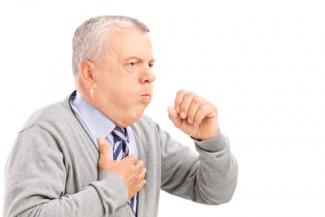 Elder abuse, or any intentional or negligent act that causes harm or loss to an older person, is a significant health problem in the United States.
Elder abuse, or any intentional or negligent act that causes harm or loss to an older person, is a significant health problem in the United States.
 Elder abuse, or any intentional or negligent act that causes harm or loss to an older person, is a significant health problem in the United States.
Elder abuse, or any intentional or negligent act that causes harm or loss to an older person, is a significant health problem in the United States.
Although estimates vary, it is believed that between 4% and 6% of America’s older adults are abused each year – and this number is growing. According to the National Center on Elder Abuse, close to 6 million elderly abuse cases were reported in 2010 suggesting 9.5% of older adults were victims of violence.
Who is at risk?
Elder abuse affects seniors of regardless of gender, ethnic background, and socioeconomic status. Statistics show, however, that the majority of victims (67.3%) are women and Caucasian (66.4%). Nearly 30% of victims are African American or Hispanic.
Unfortunately, due to under-reporting and the lack of a uniform national reporting system, the scope of the problem is likely underestimated. In many cases, victims may be afraid or physically unable to tell the authorities, family, friends, or other caregivers about maltreatment.
What types of elder abuse exist?
There are six major categories of elder abuse:
1. Physical abuse is inflicting or threatening to inflict the use of physical force that may result in bodily injury, physical pain, or impairment. Physical abuse includes acts such as hitting, beating, pushing, and slapping the person. Inappropriate use of drugs and physical restraints and force-feeding are also examples of physical abuse. Physical abuse accounts for over 15% of elder abuse cases.
Warning signs: bruises, black eyes, broken bones, opens wounds and cuts, internal bleeding, a sudden change of behavior in the elder, caregiver’s refusal to allow lone visitors.
2. Emotional or psychological abuse is defined as the infliction of anguish, pain, or distress through verbal or non-verbal acts, including but not limited to insults, threats, humiliation, and harassment. Treating the older person like an infant and enforced social isolation are common examples of emotional and psychological elder abuse.
Warning signs: Expressions of agitation and withdrawal from the older person, unusual behavior such as sucking or rocking typically attributed to dementia.
3. Sexual abuse includes non-consensual sexual contact of any kind with a vulnerable elderly person. All types of sexual assault and battery as well as acts such as unwanted touching, rape, and coerced nudity are considered sexual abuse.
Warning signs: Bruises around breasts and genitals, unexplained sexual transmitted diseases or bleeding, torn clothing
4. Financial/material exploitation is defined as the Illegal or improper use of a senior’s funds, property, or assets. Acts of financial abuse include using the elder’s checks without permission, stealing money, coercing an older person to sign contracts or a will, and improper use of guardianship or power of attorney.
Warning signs: unexplained withdrawals of large sums of money from bank accounts, abrupt changes in a will, unexplained bank transfers, the inclusion of additional names of signature cards.
5. Neglect accounts for the majority (58%) of elder abuse cases. Neglect involves refusal or failure by caretakers to fulfill obligation and duties related to the care and protection of an elderly person. This may include the failure to provide for basic necessities such as food, shelter, clothing, personal hygiene, safety, and medication, but may also involve the failure of a caregiver’s fiduciary responsibilities to properly manage money or pay for services such as home care. Self neglect is characterized as the behavior of an elderly person to provide for his or her own essential needs.
Warning signs: Dehydration, malnutrition, bed sores, hazardous or unsanitary living conditions (eg. Soiled bedding, no running water), unattended to health problems
6. Abandonment occurs when the elderly person is deserted by a caregiver or the person with physical custody of the elder.
Warning signs: leaving the older adult at the hospital or in a public location such as a shopping center.
Weigh in: What can be done to prevent elder abuse? How can we be better advocates for victims of elder abuse?





